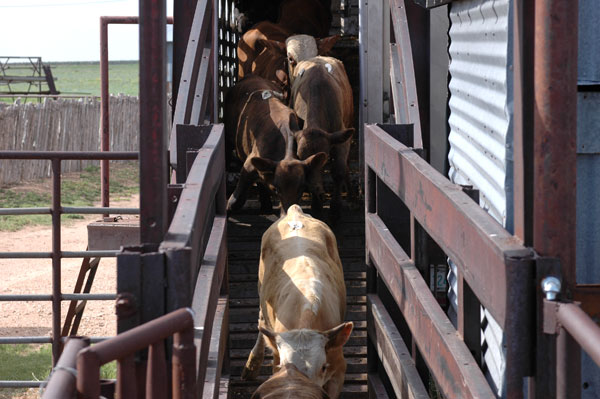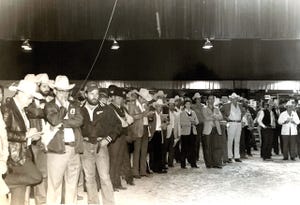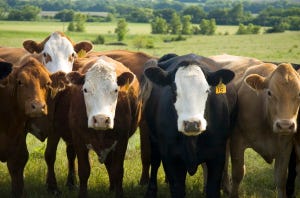Are grow yards an option to diversify the ranch?
If a son, daughter or other relative wants to join your outfit, how can you diversify to make that happen? A grow yard may be the answer.

One of the more difficult aspects of bringing a family member into the cattle operation is how to grow or diversify the ranch so a son, daughter or other relative can add to the bottom line.
Don Close has a suggestion—how about adding a grow yard to the business?
In a report released during the Cattle Industry Convention in New Orleans, the Rabobank senior animal protein analyst says grow yards are evolving as the cattle feeding sector changes to face an ever-revolving set of challenges. One of those challenges is how to procure cattle that can go on feed with no speed bumps.
That’s where a grow yard comes in.
It’s not that grow yards are a new idea, Close says. Indeed, they’ve been around a long time. It’s that as commercial feedyards adapt to a changing marketing environment, grow yards are poised to fill an important step in getting cattle from the ranch to retail.
“Commercial feeders increasingly have marketing agreements that require cattle to meet specific feeding and management regimens with targeted out dates and finished weights,†Close says. That means just buying a load of high-risk calves and crossing your fingers no longer is a viable option. What’s more, large commercial feedyards are not well designed to handle high-risk calves, especially as skilled labor becomes harder and harder to find.
But, Close says, it’s not as simple as just hanging out your shingle. “There are challenges that need to be resolved,†Close says. One in how calves in a grow yard are managed and another in the relationship between the grow yard and the commercial feedyard.
Large commercial feedyards will pay for convenience, and high-risk calves are awfully inconvenient. One niche a grow yard fills is taking high-risk calves and getting them straightened out before they go to the feedyard. This means grow yard managers and employees will need to be particularly well skilled in animal health.
LISTEN NOW: Don Close & Burt Rutherford talk grow yards and how it might be an economical solution for your ranch
It takes a stockman to handle high-risk calves, Close says. If you have that skill set, there is an opportunity to put your experience and knowledge to work.
The other challenge is establishing and then maintaining relationships with any number of commercial feedyards that will increasingly rely on grow yards to supply their cattle.
“The majority of grow yard mangers tell me that their ideal position in the market is to have relationships with two to four commercial feeding companies,†Close says. “Having multiple company relationships improves their odds of having multiple avenues of finding a buyer on any given day. They also say having multiple buyers enables them to target specific types of cattle to different feeding companies.â€
Close thinks the relationship between grow yards and feedyards will tighten and become more aligned in the not-too-distant future. He says this will provide a number of benefits:
The strengthened relationship will provide improved economies of scale with shared resources. “This will give feedyards the ability to use the same nutritionists [in both facilities], enhancing cattle performance,†Close says.
That avoids duplication in processing and creates a seamless transition of cattle from the grow yard to the feedyard. “Again, this alignment can improve cattle performance and health because it can reduce the stress on the animal in transitioning to a feedyard environment.†This lowers cost of gain and improves the ability of the cattle to meet or exceed grading expectations because the cattle will have been on consistent, uninterrupted feed and health programs, he says.
However, there’s no need to spend a lot of money building new pens and bunks, Close says. It can be as simple as putting some portable bunks in a grass trap or working pens. In some parts of the country, smaller feedyards are struggling or closed and may be available.
But for an operation of this type to achieve an economy of scale to make it workable, Close thinks you’re looking at enough capacity to hold 3,000 to 5,000 head at a time. Typically, he says commercial feedyards want cattle in a growing environment for no more than 150 days and gain no more than 250 pounds. But different feedyards may want cattle coming at different weights, allowing a grow yard to tailor cattle for specific needs.
High-risk calves require more hands-on work, however, so a good rule of thumb is to figure 1.5 people per 1,000 head.
So, is adding a grow yard to your existing cattle enterprise a good idea? Possibly, but do your homework first and make sure you have a place for those calves to go before you start.
About the Author(s)
You May Also Like
.png?width=300&auto=webp&quality=80&disable=upscale)


